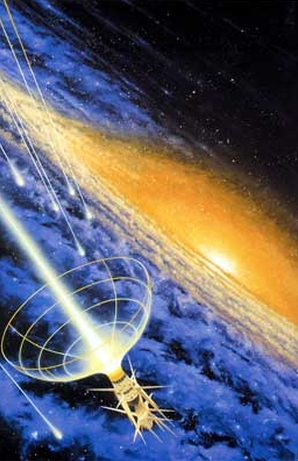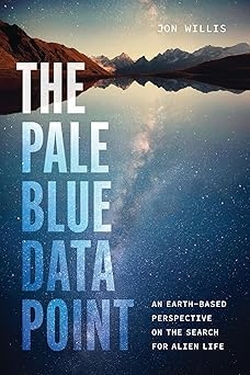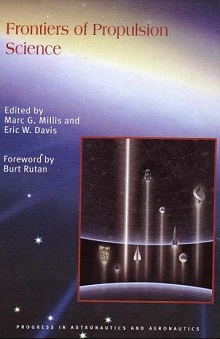As the AI surge continues, it’s natural to speculate on the broader effects of machine intelligence on deep space missions. Will interstellar flight ever involve human crews? The question is reasonable given the difficulties in propulsion and, just as challenging, closed loop life support that missions lasting for decades or longer naturally invoke. The idea of starfaring as the province of silicon astronauts already made a lot of sense. Thinkers like Martin Rees, after all, think non-biological life is the most likely intelligence we’re likely to find.
But is this really an either/or proposition? Perhaps not. We can reach the Kuiper Belt right now, though we lack the ability to send human crews there and will for some time. But I see no contradiction in the belief that steadily advancing expertise in spacefaring will eventually find us incorporating highly autonomous tools whose discoveries will enable and nurture human-crewed missions. In this thought, robots and artificial intelligence invariably are first into any new terrain, but perhaps with their help one day humans do get to Proxima Centauri.

An interesting article in the online journal NOĒMA prompts these reflections. Robin Wordsworth is a professor of Environmental Science and Engineering as well as Earth and Planetary Sciences at Harvard. His musings invariably bring to mind a wonderful conversation I had with NASA’s Adrian Hooke about twenty years ago at the Jet Propulsion Laboratory. We had been talking about the ISS and its insatiable appetite for funding, with Hooke pointing out that for a fraction of what we were spending on the space station, we could be putting orbiters around each planet and some of their moons.
Image credit: Manchu.
It’s hard to argue with the numbers, as Wordsworth points out that the ISS has so far cost many times more than Hubble or the James Webb Space Telescope. It is, in fact, the most expensive object ever constructed by human beings, amounting thus far to something in the range of $150 billion (the final cost of ITER, by contrast, is projected at a modest $24 billion). Hooke, an aerospace engineer, was co-founder of the Consultative Committee for Space Data Systems (CCSDS) and was deeply involved in the Apollo project. He wasn’t worried about sending humans into deep space but simply about maximizing what we were getting out of the dollars we did spend. Wordsworth differs.
In fact, sketching the linkages between technologies and the rest of the biosphere is what his essay is about. He sees a human future in space as essential. His perspective moves backward and forward in time and probes human growth as elemental to space exploration. He puts it this way:
Extending life beyond Earth will transform it, just as surely as it did in the distant past when plants first emerged on land. Along the way, we will need to overcome many technical challenges and balance growth and development with fair use of resources and environmental stewardship. But done properly, this process will reframe the search for life elsewhere and give us a deeper understanding of how to protect our own planet.
That’s a perspective I’ve rarely encountered at this level of intensity. A transformation achieved because we go off planet that reflects something as fundamental as the emergence of plants on land? We’re entering the domain of 19th Century philosophy here. There is precedent in, for example, the Cosmism created by Nikolai Fyodorov in the 19th Century, which saw interstellar flight as a simple necessity that would allow human immortality. Konstantin Tsiolkovsky embraced these ideas but welded them into a theosophy that saw human control over nature as an almost divine right. As Wordsworth notes, here the emphasis was entirely on humans and not any broader biosphere (and some of Tsiolkovsky’s writings on what humans should do to nature are unsettling}.
But getting large numbers of humans off planet is proving a lot harder than the optimists and dreamers imagined. The contrast between Gerard O’Neill’s orbiting arcologies and the ISS is only one way to make the point. As we’ve discussed here at various times, human experiments with closed loop biological systems have been plagued with problems. Wordsworth points to the concept of the ‘ecological footprint,’ which makes estimates of how much land is required to sustain a given number of human beings. The numbers are daunting:
Per-person ecological footprints vary widely according to income level and culture, but typical values in industrialized countries range from 3 to 10 hectares, or about 4 to 14 soccer fields. This dwarfs the area available per astronaut on the International Space Station, which has roughly the same internal volume as a Boeing 747. Incidentally, the total global human ecological footprint, according to the nonprofit Global Footprint Network, was estimated in 2014 to be about 1.7 times the Earth’s entire surface area — a succinct reminder that our current relationship with the rest of the biosphere is not sustainable.
As I interpret this essay, I’m hearing optimism that these challenges can be surmounted. Indeed, the degree to which our Solar System offers natural resources is astonishing, both in terms of bulk materials as well as energy. The trick is to maintain the human population exploiting these resources, and here the machines are far ahead of us. We can think of this not simply as turning space over to machinery but rather learning through machinery what we need to do to make a human presence there possible in longer timeframes.
As for biological folk like ourselves, moving human-sustaining environments into space for long-term occupation seems a distinct possibility, at least in the Solar System and perhaps farther. Wordsworth comments:
…the eventual extension of the entire biosphere beyond Earth, rather than either just robots or humans surrounded by mechanical life-support systems, seems like the most interesting and inspiring future possibility. Initially, this could take the form of enclosed habitats capable of supporting closed-loop ecosystems, on the moon, Mars or water-rich asteroids, in the mold of Biosphere 2. Habitats would be manufactured industrially or grown organically from locally available materials. Over time, technological advances and adaptation, whether natural or guided, would allow the spread of life to an increasingly wide range of locations in the solar system.
Creating machines that are capable of interstellar flight from propulsion to research at the target and data return to Earth pushes all our limits. While Wordsworth doesn’t address travel between stars, he does point out that the simplest bacterium is capable of growth. Not so the mechanical tools we are so far capable of constructing. A von Neumann probe is a hypothetical constructor that can make copies of itself, but it is far beyond our capabilities. The distance between that bacterium and current technologies, as embodied for example in our Mars rovers, is vast. But machine evolution surely moves to regeneration and self-assembly, and ultimately to internally guided self-improvement. Such ‘descendants’ challenge all our preconceptions.
What I see developing from this in interstellar terms is the eventual production of a star-voyaging craft that is completely autonomous, carrying our ‘descendants’ in the form of machine intellects to begin humanity’s expansion beyond our system. Here the cultural snag is the lack of vicarious identification. A good novel lets you see things through human eyes, the various characters serving as proxies for yourself. Our capacity for empathizing with the artilects we send to the stars is severely tested because they would be non-biological. Thus part of the necessary evolution of the starship involves making our payloads as close to human as possible, because an exploring species wants a stake in the game it has chosen to play.
We will need machine crewmembers so advanced that we have learned to accept their kind as a new species, a non-biological offshoot of our own. We’re going to learn whether empathy with such beings is possible. A sea-change in how we perceive robotics is inevitable if we want to push this paradigm out beyond the Solar System. In that sense, interstellar flight will demand an extension of moral philosophy as much as a series of engineering breakthroughs.
The October 27 issue of The New Yorker contains Adam Kirsch’s review of a new book on Immanuel Kant by Marcus Willaschek, considered a leading expert on Kant’s era and philosophy. Kant believed that humans were the only animals capable of free thought and hence free will. Kirsch adds this:
…the advance of A.I. technology may soon put an end to our species’ monopoly on mind. If computers can think, does that mean that they are also free moral agents, worthy of dignity and rights? Or does it mean, on the contrary, that human minds were never as free as Kant believed—that we are just biological machines that flatter ourselves by thinking we are something more? And if fundamental features of the world like time and space are creations of the human mind, as Kant argued, could artificial minds inhabit entirely different realities, built on different principles, that we will never fully understand?
My thought is that if Wordsworth is right that we are seeing a kind of co-evolution at work – human and machine evolution accelerated by expansion into this new environment – then our relationship with the silicon beings we need will demand acceptance of the fact that consciousness may never be fully measured. We have yet to arrive at an accepted understanding of what consciousness is. Most people I talk to see that as a barrier. I’m going to see it as a challenge, because our natures make us explorers. And if we’re going to continue the explorations that seem part of our DNA, we’re now facing a frontier that’s going to demand consensual work with beings we create.
Will we ever know if they are truly conscious? I don’t think it matters. If I’m right, we’re pushing moral philosophy deeply into the realm of the non-biological. The philosophical challenge is immense, and generative.
The article is Wordsworth, “The Future of Space is More Than Human,” in the online journal NOĒMA, published by the Berggruen Institute and available here.


